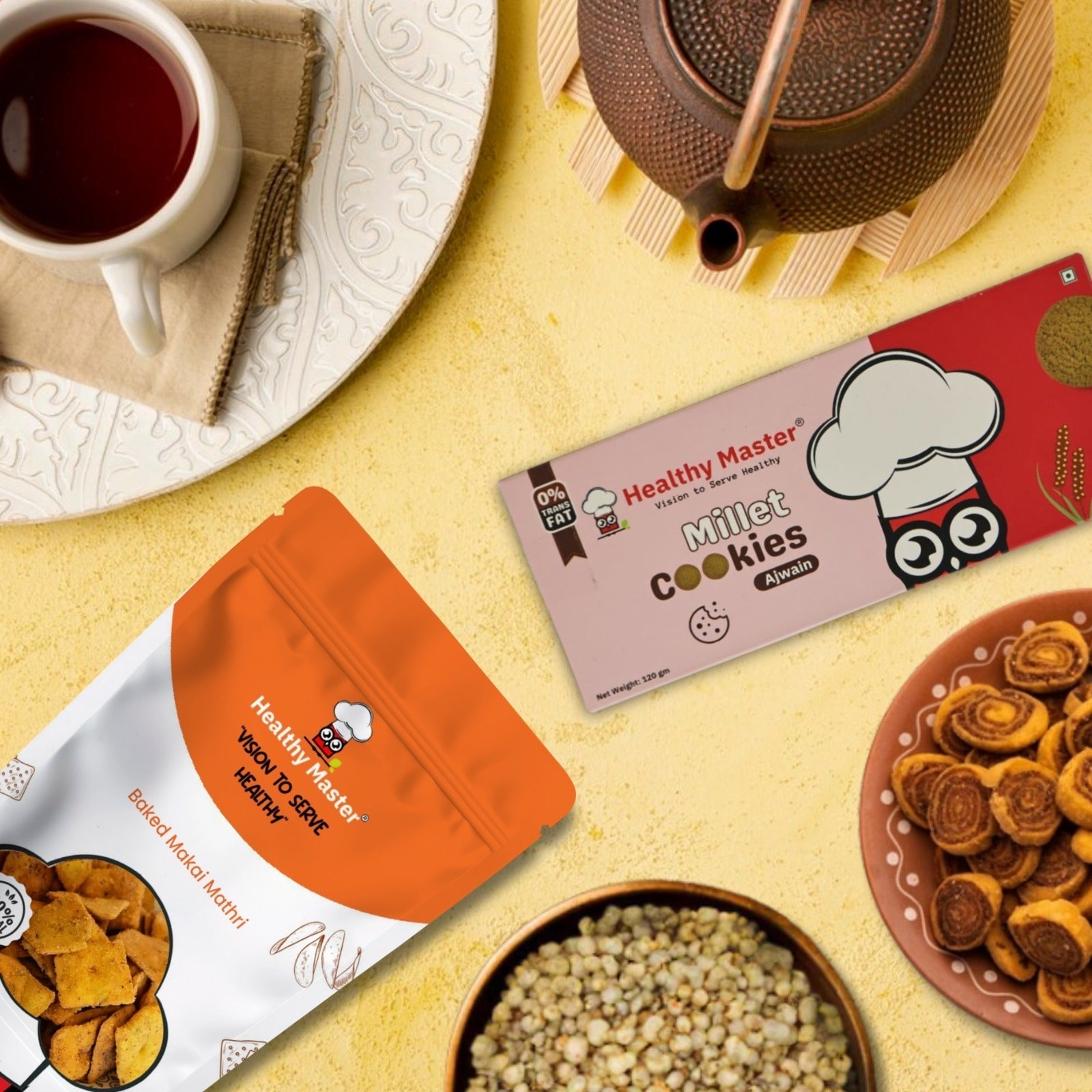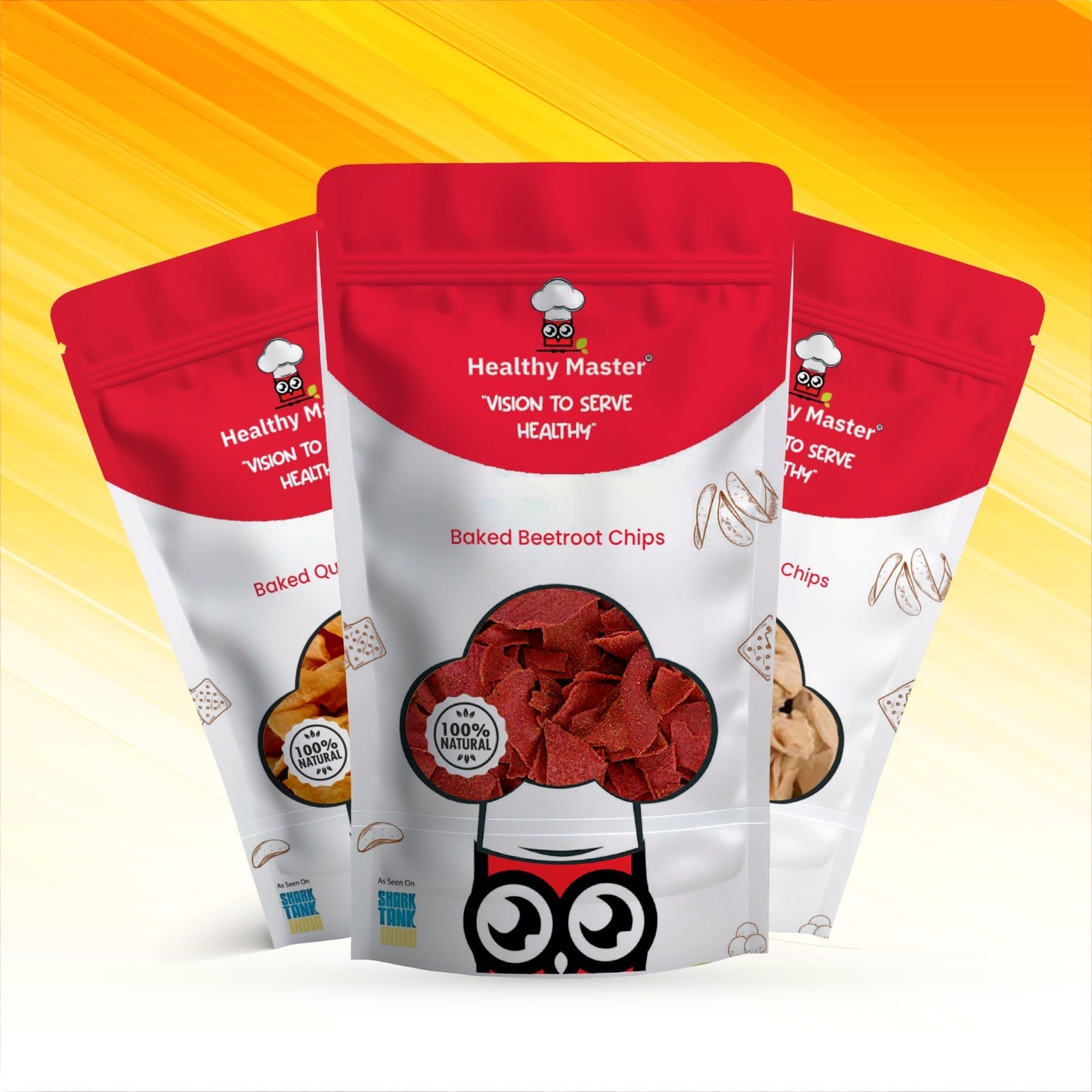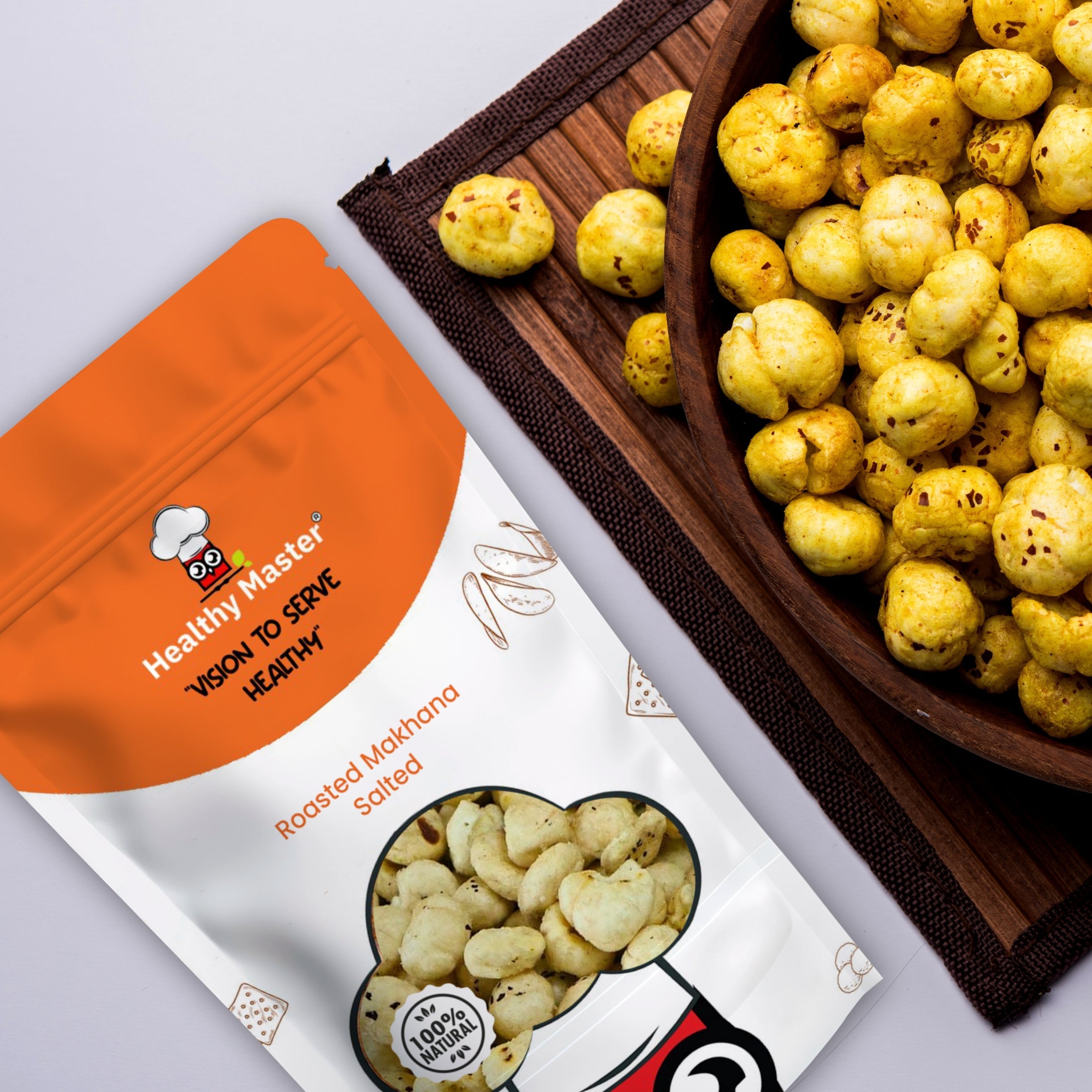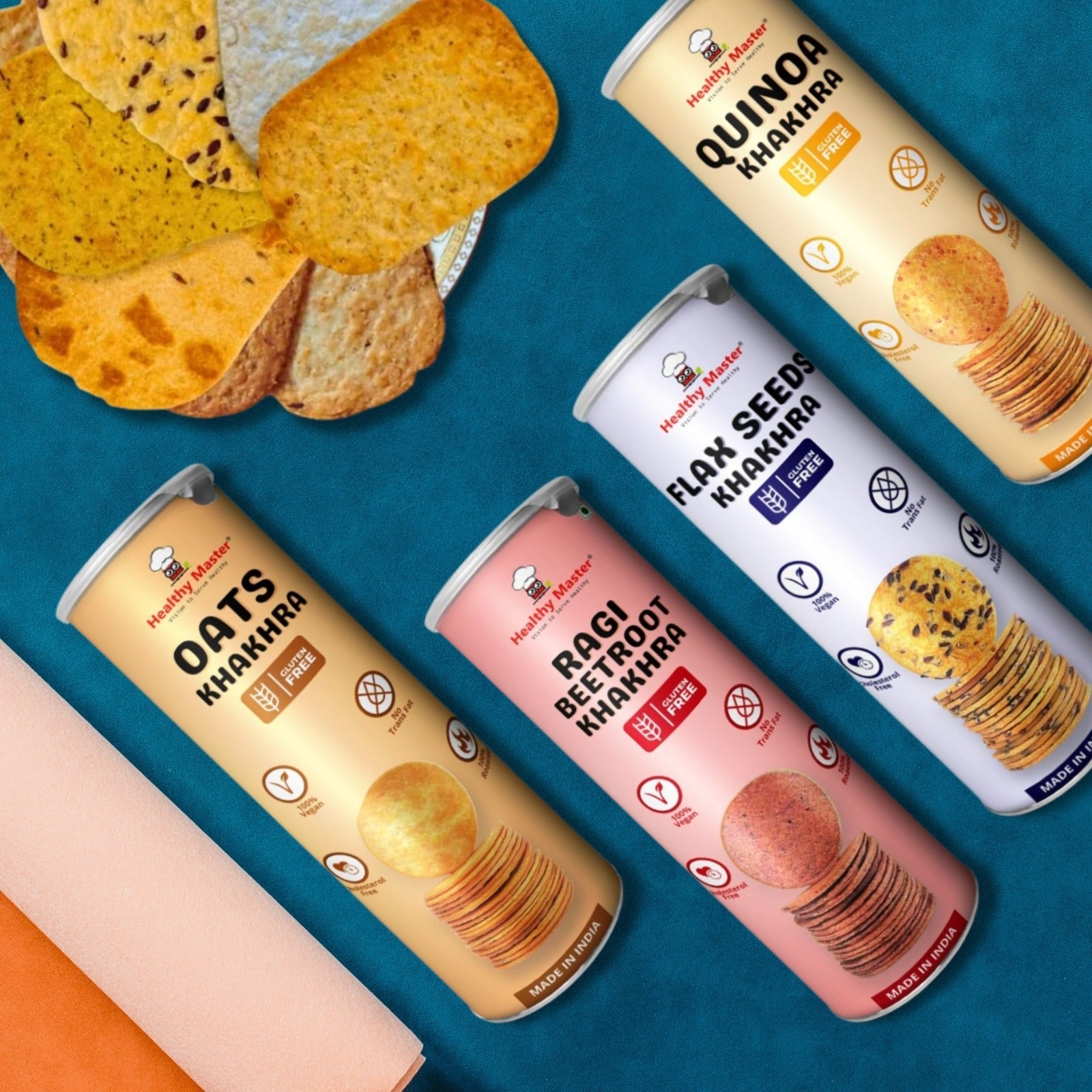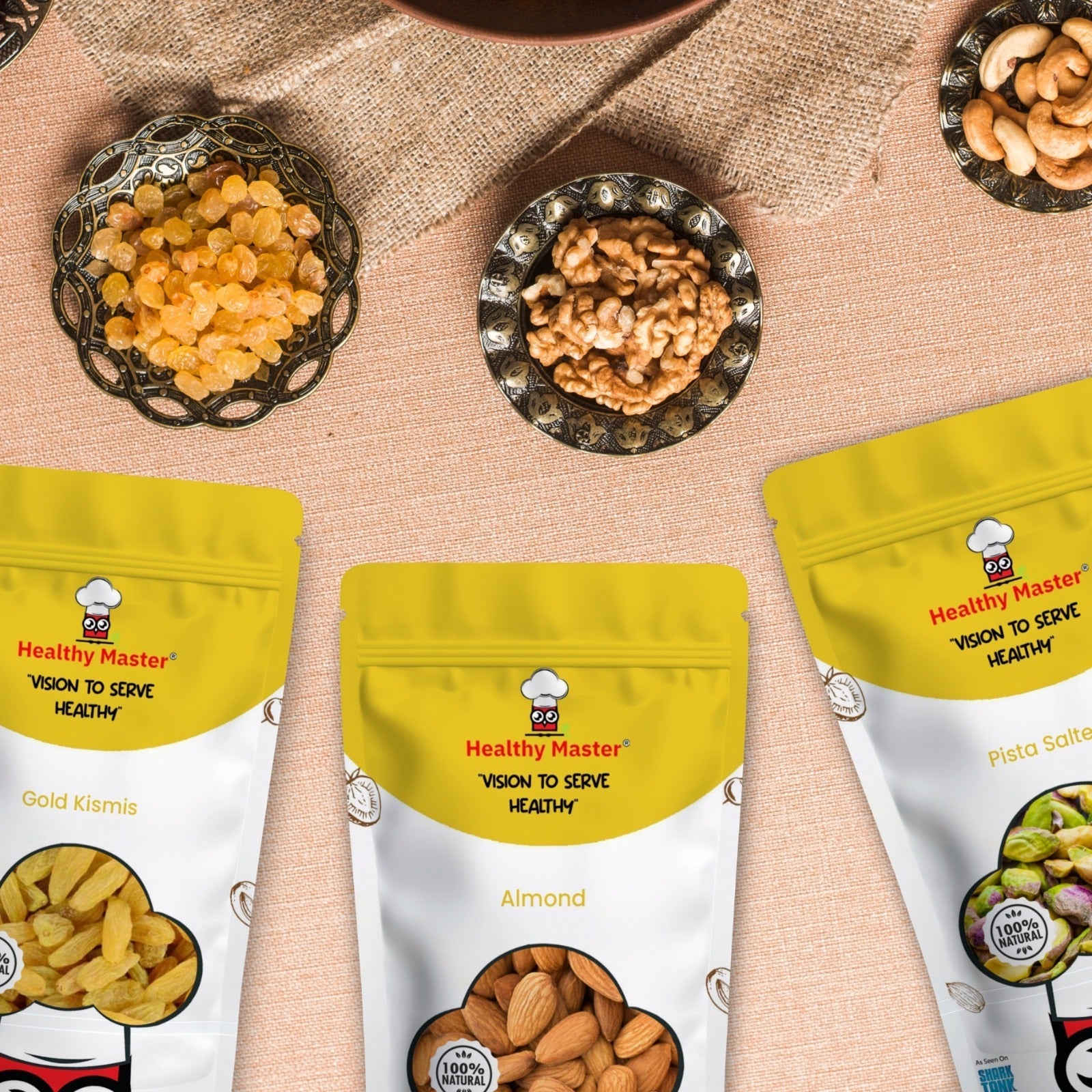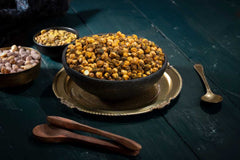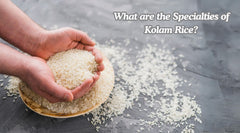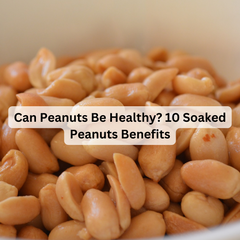If you’ve ever stood in the grocery aisle torn between a pack of millet noodles and your usual regular noodles, you’re not alone. Noodles have been a comfort food for millions of Indians, from a quick evening snack to a midnight craving fix. But with growing awareness about nutrition, millet noodles are now stepping into the spotlight as a healthier, more wholesome choice.
And the thing is, choosing between millet noodles and regular noodles isn't simply a matter of taste. It's calories, nutrition facts, and how these decisions impact your overall long-term health. For parents, weight watchers, and health-conscious foodies, knowing the difference is the first step towards guilt-free noodle slurping.
What Are Millet Noodles?
Consider millet noodles as upgraded noodles. Rather than being prepared from refined wheat flour, they are made from nutrition-rich millets such as:
-
Ragi (Finger Millet) – High in iron and calcium
-
Jowar (Sorghum) – Rich in fibre and antioxidants
-
Bajra (Pearl Millet) – Best for heart health
-
Foxtail Millet – Low glycemic index, sugar level controller
Most quality millet noodle brands (such as ours at Healthy Master) maintain them maida-free or with low refined flour content, making them inherently gluten-free and less taxing on digestion. They're also much more satiating, which translates to fewer night cravings.
What Are Plain Noodles Composed Of?
Plain noodles, the kind most of us are used to, are typically composed of refined wheat flour (maida). Although they cook fast and are delicious, what's in that bowl is:
-
Low fibre - Rapid sugar spikes, low satiety
-
Highly refined carbs - Zero nutritional value
-
Often fried in the factory - More fat content
-
No vitamins and minerals
They're an easy choice, but from a nutrition perspective, they're really an occasional treat rather than an everyday food.
Also read about: Smart alternatives to maida snacks
Calorie Comparison: Millet Noodles vs Regular Noodles
Let’s talk numbers because they often tell the real story.
|
Noodles Type |
Approx. Calories (per 100g, uncooked) |
Fibre |
Protein |
Glycemic Index |
|
Millet Noodles |
330–350 kcal |
6–8g |
10–12g |
Low to Medium |
|
Regular (Maida) Noodles |
350–370 kcal |
2–3g |
7–8g |
High |
Surprised? The calorie count is similar, but the nutritional breakdown changes the game. Millet noodles deliver more fibre and protein with a lower glycemic load, meaning you stay full longer and avoid that post-noodle energy crash.
Nutritional Benefits of Millet Noodles Over Regular Noodles
-
Higher Fibre Content
Millet noodles are fibre-rich, which means better digestion, improved gut health, and a slower release of sugar into the bloodstream. If you’ve ever felt hungry an hour after eating regular noodles, it’s because their low fibre content leaves you unsatisfied.
-
Better Protein Profile
With as much as 40% more protein than traditional noodles, millet noodles aid in muscle repair, increase satiety, and are an intelligent choice for busy bodies and developing children.
-
Lower Glycemic Index
Diabetics and pre-diabetics, this is significant. The low GI of millet noodles maintains stable blood sugar levels, as opposed to traditional noodles, which can lead to acute spikes.
-
Micronutrient-dense
Millets are a natural source of iron, magnesium, phosphorus, and B vitamins, the very nutrients maida loses during heavy refining. So, millet noodles are a food that feeds, rather than merely fills.
-
No Refined Maida
So why does it matter? Refined maida is robbed of nutrients, inflammation-causing in some individuals, and offers little in the way of anything other than empty calories. Millet noodles avoid all that, so it's a less processed, gut-friendly alternative.
Who Should Opt for Millet Noodles
Based on personal experience as a parent concerned about my children's health and owner of a brand, here's where millet noodles truly excel:
-
Children - More nutrition in a fun package, they'll eat
-
Diabetics & Pre-diabetics - Reduced sugar spikes, improved energy
-
Weight Watchers - More satiating, fewer cravings later
-
Individuals with Gluten Sensitivity - Several millet noodles are gluten-free by nature. Also, check our other range of gluten-free snacks.
How to Make Millet Noodles Healthier
Millet noodles are already on a healthy footing, but you can enhance them even further with some modifications:
-
Add vegetables in bright hues – Carrots, capsicum, broccoli, spinach
-
Add a lean protein – Egg, tofu, chicken, or paneer
-
Avoid heavy fried sauces – Go for light stir-fry sauces or your own spice blends
-
Use very little oil – Just sufficient to coat the noodles, not to drown them
Pro tip? At Healthy Master, we enjoy serving our millet noodles accompanied by a fresh salad side dish for some added crunch and nutrition.
Also read about: How to prepare millet noodles for kids
Final Verdict – Are Millet Noodles Healthier Than Regular Noodles?
Short answer? Yes. Though the calorie figure might appear to be the same, the nutritional value of millet noodles compared to maida noodles is far different. With higher fibre, protein, and essential mineral content, minus the weight of refined flour, millet noodles are the obvious choice for anyone who wants to eat healthier without compromising on comfort food.
So the next time you're filling up your pantry, perhaps it's time to skip the good old maida noodles and give millet noodles a chance to shine.
At Healthy Master, we make millet noodles that are delicious, maida-free, and loved by children. Taste our millet-based snacks today.
Frequently Asked Questions
-
Are millet noodles good for weight loss?
Yes, thanks to their high fibre and protein content, millet noodles keep you fuller for longer and help control calorie intake.
-
Do millet noodles taste like regular noodles?
They’re slightly nuttier and heartier but can be made to taste just like your favourite chow mein with the right seasoning.
-
Can kids eat millet noodles daily?
Especially when cooked with vegetables and minimal oil. They’re a healthier swap for instant noodles.
-
How long do millet noodles take to cook?
Usually 5–7 minutes, depending on the brand. They cook just as quickly as regular noodles.
 Deal of the week : Trial Snack Box - 18 Wholesome Delights Just at ₹ 899.00
Deal of the week : Trial Snack Box - 18 Wholesome Delights Just at ₹ 899.00


